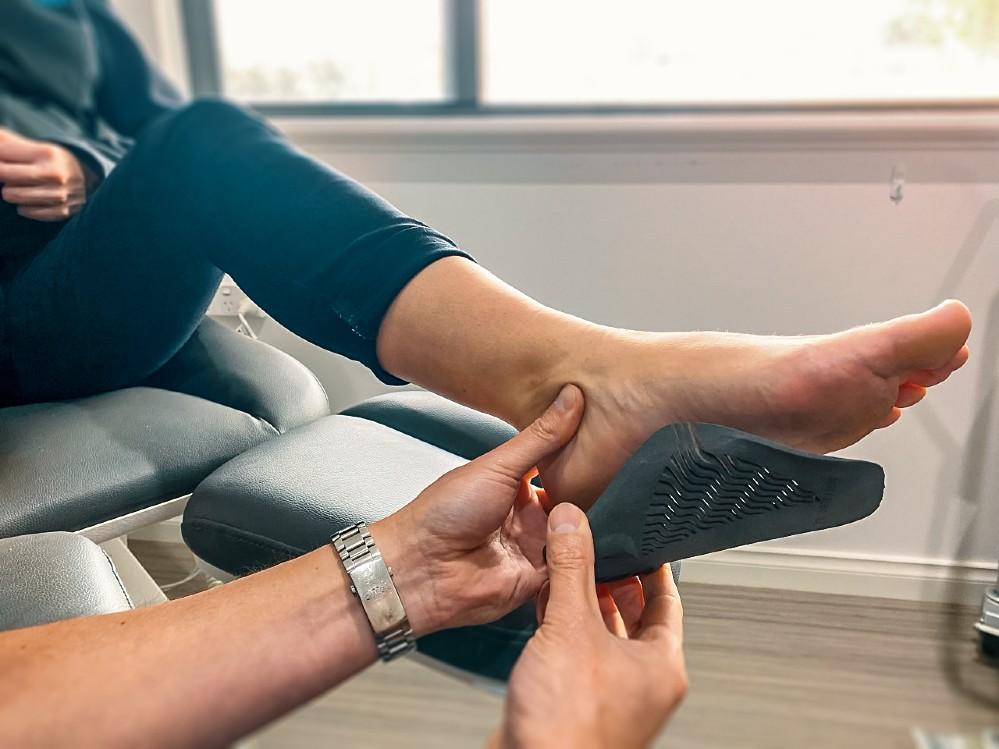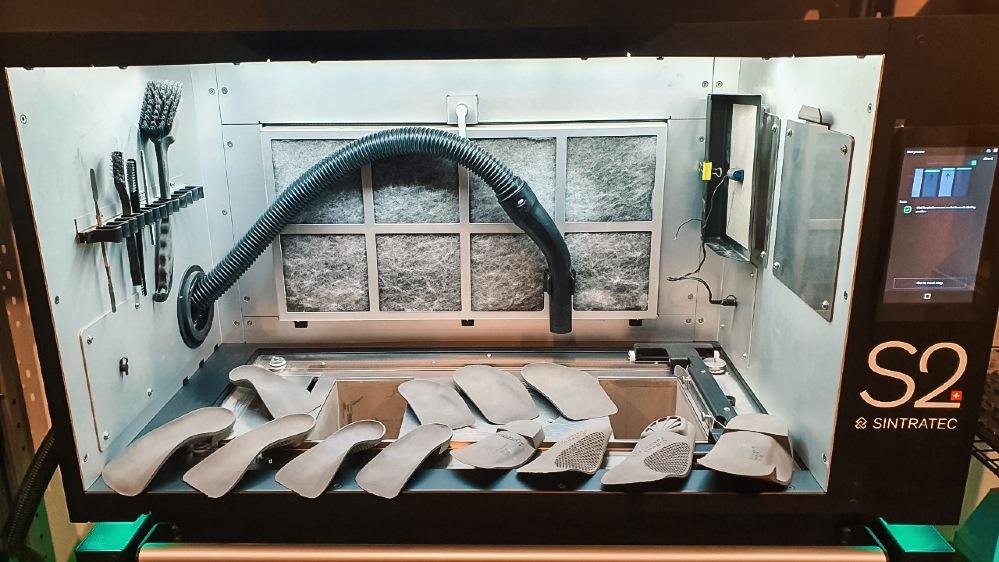- FMA
- The Fabricator
- FABTECH
- Canadian Metalworking
Our Publications
Categories
- Additive Manufacturing
- Aluminum Welding
- Arc Welding
- Assembly and Joining
- Automation and Robotics
- Bending and Forming
- Consumables
- Cutting and Weld Prep
- Electric Vehicles
- En Español
- Finishing
- Hydroforming
- Laser Cutting
- Laser Welding
- Machining
- Manufacturing Software
- Materials Handling
- Metals/Materials
- Oxyfuel Cutting
- Plasma Cutting
- Power Tools
- Punching and Other Holemaking
- Roll Forming
- Safety
- Sawing
- Shearing
- Shop Management
- Testing and Measuring
- Tube and Pipe Fabrication
- Tube and Pipe Production
- Waterjet Cutting
Industry Directory
Webcasts
Podcasts
FAB 40
Advertise
Subscribe
Account Login
Search
SLS 3D printer helps shop speed the production of foot orthoses
- August 7, 2021
- News Release
- Additive Manufacturing

An SLS 3D printer has allowed Advanced Family & Sports Podiatry to shorten the time needed to ship a custom brace from two weeks to 24 hours. Images: AFSP
An Australian company that specializes in manufacturing custom foot, ankle, and other lower-limb braces has acquired a selective laser sintering-style 3D printer to help shorten delivery times. Advanced Family & Sports Podiatry’s new Sintratec S2 modular SLS system reportedly has cut delivery of some orthoses by nearly two weeks.
The 15-year-old, 10-employee company began experimenting with additive manufacturing technologies in 2020. The shop initially tried fused filament fabrication (FFF)-style printers, said the shop’s owner, Mark Ireland, but soon reached the technology’s limitations.
“We quickly realized the [FFF] parts did not possess the mechanical strength we required from our products,” he said. “We also trialed SLA (stereolithography), but unfortunately with the same outcome.”
He sought an alternative. “Our parts need to have a high degree of accuracy and can involve complex shapes to contour and help the foot and ankle function,” Ireland explained. “They also need to have some flexibility without shattering and have a high heat-deflection temperature to preserve an orthotic’s shape under stress.” Low moisture absorption is important, too, because of the environment orthoses are commonly used in.
According to Ireland, the SLS process is one of the additive technologies that can meet these demands.
Advanced Family & Sports took delivery of the Sintratec S2 in April 2021. Soon after, the full potential of SLS technology became evident,” said Ireland. “The biggest advantages to us are the speed of production, accuracy of the build, and unrestricted design freedom to test and push new shapes for the benefit of our clients.”
The shop produces custom and semi-customized foot orthoses from PA12 nylon. It’s now able to ship a custom orthotic in less than 24 hours instead of the customary two weeks.
- Podcasting
- Podcast:
- The Fabricator Podcast
- Published:
- 04/16/2024
- Running Time:
- 63:29
In this episode of The Fabricator Podcast, Caleb Chamberlain, co-founder and CEO of OSH Cut, discusses his company’s...
- Trending Articles
- Industry Events
16th Annual Safety Conference
- April 30 - May 1, 2024
- Elgin,
Pipe and Tube Conference
- May 21 - 22, 2024
- Omaha, NE
World-Class Roll Forming Workshop
- June 5 - 6, 2024
- Louisville, KY
Advanced Laser Application Workshop
- June 25 - 27, 2024
- Novi, MI

























